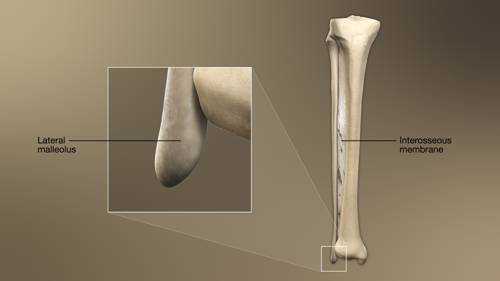
FAQ About The Role of Animation in Scientific Visualization

What is scientific visualization?
Scientific visualization is the process of using graphical representations to illustrate and understand complex scientific data or concepts. This can include a variety of visual aids such as graphs, images, and animations. The goal is to communicate intricate information clearly and effectively, often making it more accessible to a broader audience.

How does animation enhance scientific visualization?
Animation enhances scientific visualization by adding a dynamic element that can illustrate changes over time, depict spatial transformations, or simulate intricate processes. This can improve comprehension by allowing viewers to observe sequences of events, interactions, or progressions that static images can't capture. Animations can bridge the gap between theoretical models and real-world understanding.

Why is animation important in scientific communication?
Animation plays a crucial role in scientific communication by making abstract or complex ideas more tangible and easily understood. It engages audiences more effectively than static images and can break down barriers to understanding for non-specialists. By visualizing data dynamically, scientists can convey findings and insights more persuasively and accurately.

What are some common fields that use animation in scientific visualization?
Fields that commonly use animation in scientific visualization include medicine (e.g., visualizing the human body's functioning), climatology (e.g., simulating weather patterns), astrophysics (e.g., illustrating cosmic events), and molecular biology (e.g., displaying biochemical interactions). Each uses animation to translate complex data into comprehensible visuals.

How do animations help in understanding complex scientific data?
Animations help in understanding complex scientific data by presenting changes over time, interactions, and processes in a way that is intuitive and easy to follow. They can simplify multifaceted information into clear, step-by-step sequences, often highlighting critical trends or anomalies that might be missed in traditional data presentation.

What software is used for creating animations in scientific visualization?
Several software programs are used for creating animations in scientific visualization, including Blender, MATLAB, Maya, and Adobe After Effects. Each of these tools offers specific features tailored to different aspects of scientific visualization, from rendering 3D models to simulating physical processes.

Can animations be integrated into scientific presentations and publications?
Yes, animations can be integrated into scientific presentations and publications. Digital platforms and formats like PDFs and online journals increasingly support animated content. This integration allows for more engaging presentations and provides readers with a dynamic perspective on the research being presented.

Are there any limitations to using animation in scientific visualization?
While animations are powerful, they have limitations. Creating high-quality animations can be time-consuming and resource-intensive. There's also a risk of oversimplification, where animations might not capture every detail of the data, potentially misleading if not carefully crafted. Additionally, not all audiences have the technology required to view animations seamlessly.

How can animation improve public understanding of scientific concepts?
Animation can improve public understanding by transforming complex scientific concepts into engaging, visually appealing stories. By illustrating concepts in a concrete, relatable manner, animations can demystify science for the public, thereby fostering greater interest and understanding in scientific topics.

What are the challenges in creating animations for scientific purposes?
Challenges in creating animations for scientific purposes include accurately representing data while keeping the narrative engaging and understandable. It also involves being technically proficient in animation software and ensuring the visual outputs are scientifically accurate. Balancing these aspects while maintaining the attention of the target audience can be challenging.

What impact does animation have on scientific research dissemination?
Animation has a significant impact on the dissemination of scientific research as it promotes wider reach and comprehension across diverse audience groups. By using animations, researchers can communicate their findings more effectively, facilitating broader engagement and understanding within both scientific communities and the general public.

Can animations be used to predict scientific phenomena?
Yes, animations can be used to predict scientific phenomena through simulations. By applying mathematical models and real-world data, animations can visualize possible outcomes and transformations, such as predicting weather changes or modeling astronomical events, helping scientists to anticipate and communicate future occurrences.

How are animations used in educational contexts for science?
In educational contexts, animations are used to explain complex scientific theories and concepts in an interactive manner. They serve as invaluable teaching tools that can illustrate processes like cellular activities or geological events, offering students a clearer and more engaging learning experience compared to traditional teaching methods.

What role do animations play in scientific storytelling?
Animations play a vital role in scientific storytelling by providing a narrative structure that links data points and findings into a cohesive story. This approach makes scientific information more relatable and memorable, aiding in delivering content that audiences can easily understand and connect with on an emotional level.

Are there ethical considerations when using animation in science?
Yes, there are ethical considerations, such as ensuring that animations accurately represent scientific data without embellishing or oversimplifying facts, which could mislead viewers. Animators and scientists must maintain integrity and objectivity to ensure that animations do not distort scientific truths or propagate misinformation.

How do animations benefit remote scientific research and data sharing?
Animations benefit remote scientific research and data sharing by providing a dynamic and engaging way to visualize and communicate findings over digital platforms. They enable remote teams to present data interactively, fostering collaboration and discussion irrespective of geographical barriers.

What technical skills are needed to create animations for scientific visualization?
Creating animations for scientific visualization requires a combination of technical skills, including proficiency in graphics and animation software, understanding of the scientific data being visualized, and the ability to translate complex information into clear and accessible animations. Knowledge in fields such as computer graphics, physics, and communication can also be beneficial.

How do animations contribute to the accuracy of scientific simulations?
Animations contribute to the accuracy of scientific simulations by providing a visual platform where theoretical models can be tested and refined. They allow scientists to see simulations play out in real-time, identify inaccuracies, and make adjustments accordingly, which enhances the reliability of scientific predictions and hypotheses.

What is the future of animation in scientific visualization?
The future of animation in scientific visualization is likely to involve more immersive and interactive technologies, such as virtual reality and augmented reality. These advancements could further enhance the way complex scientific data is presented and understood, making it even more accessible and engaging for both scientists and the general public.

Can animation be used to communicate scientific research to non-expert audiences?
Yes, animation is particularly effective in communicating scientific research to non-expert audiences as it breaks down complex concepts into visual and engaging narratives. This helps bridge the gap between complex scientific knowledge and public understanding, making scientific ideas accessible and interesting for everyone.
